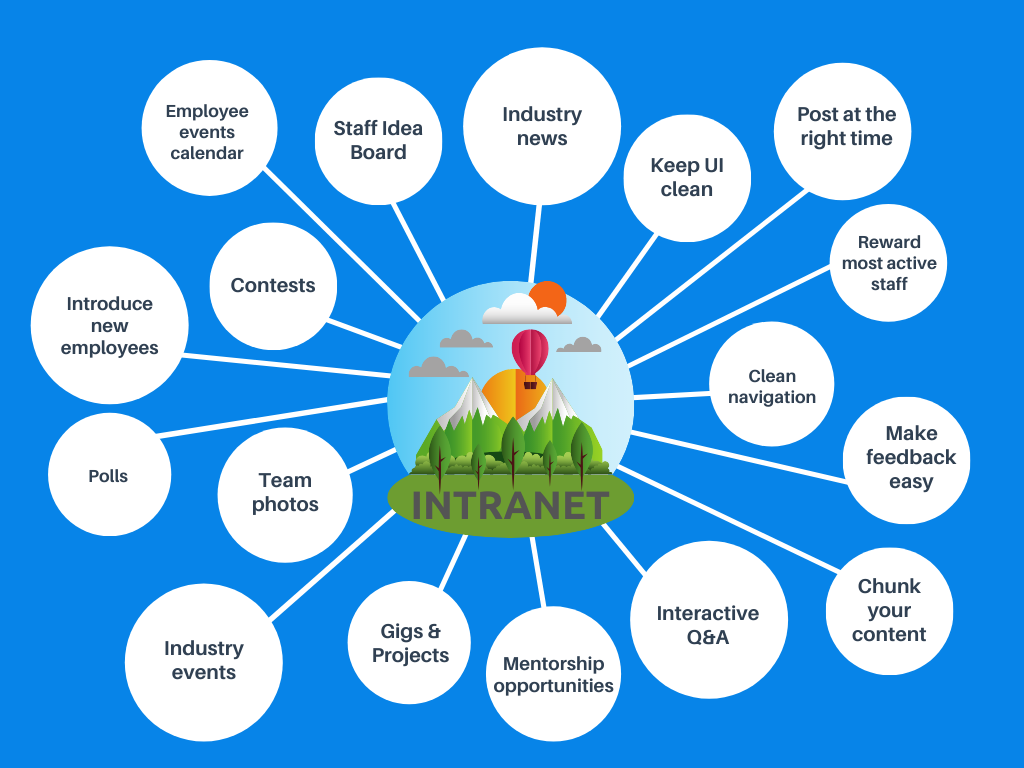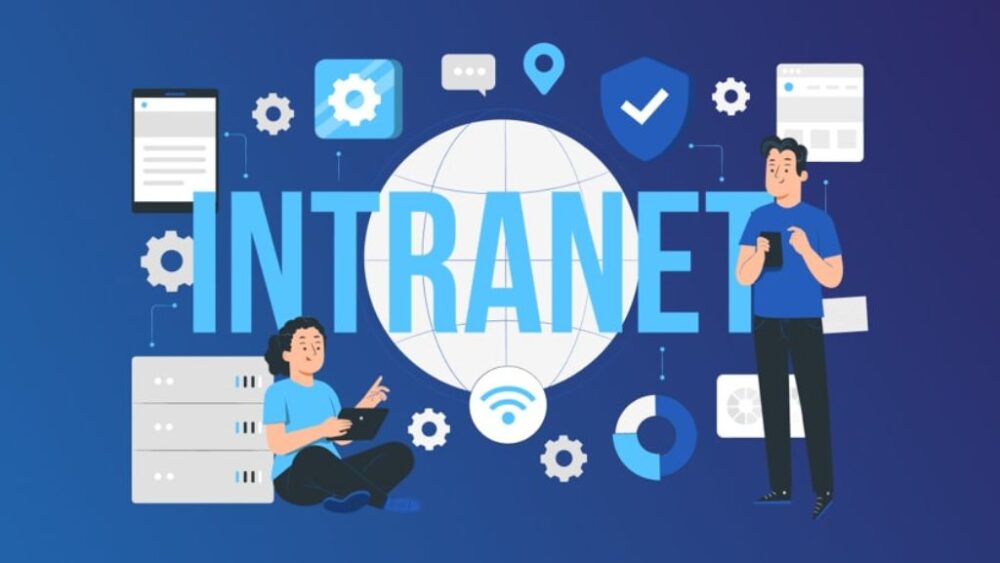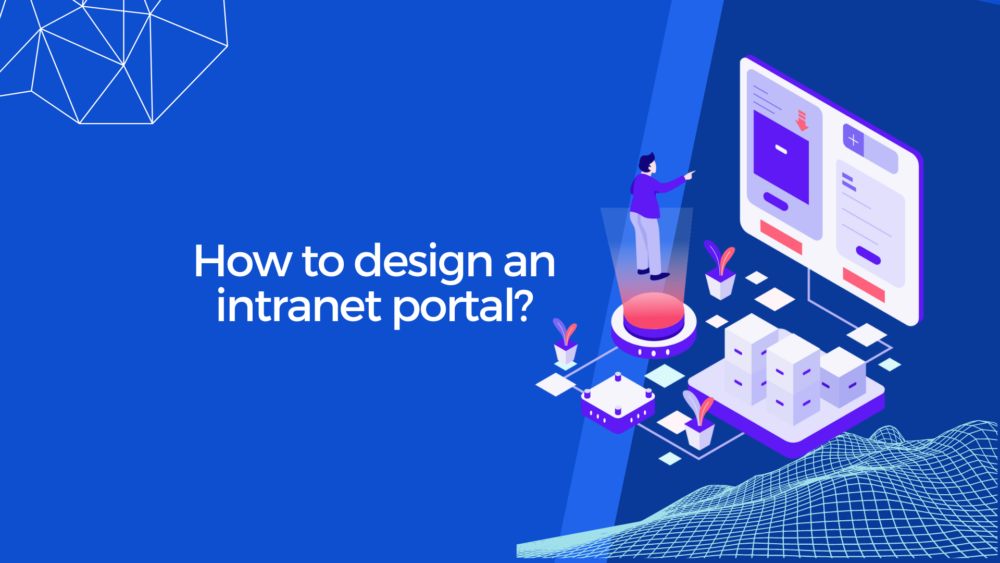How Do I Create an Intranet Portal
In today’s rapidly evolving business landscape, effective communication, collaboration, and information sharing among employees are crucial for success. One powerful tool that organizations utilize to achieve these objectives is an intranet portal. In this comprehensive guide, we will walk you through the process of creating an intranet portal from start to finish, addressing the key considerations, technology choices, and best practices to ensure the successful development and deployment of an efficient and secure corporate intranet.
Introduction to Intranet Portals

Source: origamiconnect.com
In today’s fast-paced and highly interconnected business landscape, effective communication, collaboration, and information dissemination among employees are critical to an organization’s success. It is in this context that the concept of intranet portals has emerged as a pivotal tool for modern enterprises. An intranet portal is a private and secure network that serves as a centralized hub for internal communication, information sharing, and collaboration within an organization. These digital platforms are tailored to meet the unique needs of businesses, offering a range of features and functionalities designed to enhance efficiency, productivity, and employee engagement.
Key Points to Understand about Intranet Portals:
- Purpose and Scope:
- Intranet portals are designed to cater exclusively to the internal needs of an organization, providing a closed network environment accessible only to authorized users.
- They serve as a secure repository of information, enabling employees to access resources, documents, and tools relevant to their roles and responsibilities.
- Benefits and Importance:
- Intranet portals play a pivotal role in enhancing internal communication, fostering a sense of community, and promoting knowledge sharing among employees.
- They serve as a centralized platform for disseminating corporate news, policies, and updates, ensuring that everyone is informed and aligned with the organization’s objectives.
- Intranet portals streamline workflows, reducing manual processes and improving overall operational efficiency.
- By facilitating collaboration and information accessibility, intranet portals contribute to higher employee engagement and productivity.
- Features and Functionalities:
- Intranet portals encompass a wide range of features and functionalities tailored to the organization’s specific needs, including:
- Document management and sharing capabilities.
- Task and project management tools.
- Employee directories and profiles.
- Communication channels such as messaging, forums, and news feeds.
- Access to corporate policies, procedures, and training materials.
- Intranet portals encompass a wide range of features and functionalities tailored to the organization’s specific needs, including:
- Security and Access Control:
- Data security is paramount in intranet portals. They are equipped with robust security measures, including authentication mechanisms, encryption, and access control, to protect sensitive information.
- Role-based access control ensures that users only have access to the resources and information relevant to their roles within the organization.
- User Experience and Customization:
- Modern intranet portals prioritize user experience (UX) and offer intuitive, user-friendly interfaces.
- Many portals allow for customization, enabling organizations to tailor the platform to their specific branding and functional requirements.
Understanding Intranet Portals

Source: softteco.com
Intranet portals serve as a vital cornerstone in modern organizational dynamics, encapsulating a multifaceted array of functions that transcend mere communication. To appreciate the significance of intranet portals, it is essential to delve into their core purpose, benefits, and how they align with the overarching goals of an organization.
Core Purpose of Intranet Portals: At its core, an intranet portal is a private and secure digital environment tailored exclusively for an organization’s internal use. It functions as a centralized platform that aggregates, organizes, and disseminates information, resources, and tools to employees. The primary objectives include:
- Internal Communication: Facilitating seamless communication among employees, teams, and departments by providing dedicated channels for discussions, messaging, and information sharing.
- Information Repository: Serving as a comprehensive repository for corporate policies, procedures, documents, training materials, and other essential resources, ensuring easy access and reference.
- Collaboration Hub: Fostering collaboration and knowledge sharing by offering tools for project management, task tracking, and document collaboration.
Benefits of Intranet Portals: The adoption of intranet portals brings forth a multitude of benefits that contribute to the organization’s efficiency, productivity, and overall performance:
- Enhanced Employee Collaboration: Intranet portals break down silos and geographical barriers, promoting cross-functional collaboration and sharing of expertise.
- Centralized Information Access: They provide a single point of access to critical corporate information, eliminating the need for employees to scour multiple sources for resources.
- Streamlined Communication: Intranet portals offer various communication channels, such as news feeds, discussion forums, and instant messaging, ensuring that important information reaches employees promptly.
- Knowledge Management: These portals facilitate the capture, storage, and dissemination of institutional knowledge, preserving valuable insights and best practices.
- Increased Efficiency: By automating routine tasks, managing workflows, and simplifying access to resources, intranet portals optimize internal processes and boost operational efficiency.
- Employee Engagement: Employees who have access to a well-structured and informative intranet portal tend to be more engaged, as they feel better informed and connected to the organization.
Alignment with Organizational Goals: Intranet portals should be aligned with an organization’s overarching goals and objectives. They serve as a conduit for translating these goals into actionable steps by:
- Disseminating Corporate Vision: Portals help convey the organization’s mission, vision, and strategic objectives, ensuring that every employee is well-informed and aligned with the company’s direction.
- Supporting Operational Excellence: By streamlining processes, providing access to up-to-date information, and fostering collaboration, intranet portals contribute to achieving operational excellence.
- Facilitating Innovation: Portals encourage idea-sharing and innovation by providing platforms for brainstorming, feedback collection, and cross-functional collaboration.
- Promoting Employee Well-being: They play a role in enhancing the work environment by ensuring that employees have the resources and support they need to thrive within the organization.
Planning Your Intranet Portal

Source: intlock.com
The success of an intranet portal project hinges on meticulous planning and a clear understanding of organizational needs and objectives. In this phase, careful consideration of various factors is paramount to ensure that the intranet portal aligns seamlessly with the organization’s goals and serves as a valuable asset. Here are the key steps and considerations for planning your intranet portal:
1. Define Objectives and Goals:
- Begin by clearly defining the objectives and goals of your intranet portal project. What specific problems or challenges is the portal expected to address? What are the expected outcomes?
- Ensure alignment with the organization’s broader strategic objectives, such as improving internal communication, enhancing knowledge sharing, or increasing operational efficiency.
2.Identify Target Audience:
- Determine the primary and secondary user groups who will access the intranet portal. This may include employees, management, remote workers, or specific departments.
- Understand the unique needs and preferences of each user group to tailor the portal’s features and content accordingly.
3. Establish Key Functionalities:
- Based on the defined objectives and user requirements, identify the essential functionalities the intranet portal must offer. Consider including features such as document management, collaboration tools, and communication channels.
- Prioritize functionalities based on their criticality and impact on achieving project objectives.
4. Develop a Content Strategy:
- Create a comprehensive content strategy that outlines the types of content to be included in the portal, including documents, policies, news updates, and multimedia content.
- Define content ownership, publishing workflows, and content update schedules to maintain a fresh and relevant portal.
5. Information Architecture:
- Develop a structured information architecture that categorizes and organizes content logically. Ensure intuitive navigation and easy access to information.
- Consider creating user personas and conducting usability testing to refine the information architecture.
6. Budget and Resource Allocation:
- Determine the budget available for the intranet portal project, taking into account costs related to software, hardware, design, development, and ongoing maintenance.
- Allocate human resources, including project managers, content creators, developers, and designers, as per project requirements.
7. Choose a Development Approach:
- Decide whether to build the intranet portal in-house, engage external development teams, or use pre-built intranet software.
- Evaluate the advantages and limitations of each approach and select the one that aligns best with your objectives, budget, and timeline.
8. Consider Scalability and Future Growth:
- Anticipate future organizational growth and changes when planning the intranet portal. Ensure the portal is scalable to accommodate additional users, content, and features.
- Plan for regular updates and improvements to keep the intranet portal aligned with evolving needs.
9. Project Timeline and Milestones:
- Create a detailed project timeline with clear milestones and deadlines for each phase of development, testing, and deployment.
- Establish a project management framework to track progress, identify bottlenecks, and ensure timely delivery.
10. User Training and Adoption Strategy:
– Develop a user training program to familiarize employees with the intranet portal’s features and functionalities. – Implement an adoption strategy that encourages active use of the portal and collects user feedback for continuous improvement.
Effective planning lays the foundation for a successful intranet portal project. By thoroughly understanding organizational objectives, user needs, and resource constraints, organizations can create a tailored intranet portal that not only meets current requirements but also positions the organization for future growth and success.
In conclusion, the successful development and deployment of an intranet portal represent a critical milestone in the digital transformation journey of modern organizations. It is evident from this comprehensive guide that building an intranet portal requires meticulous planning, strategic decision-making, and a relentless focus on aligning the portal with the unique needs and goals of the organization.
As organizations navigate the intricacies of intranet portal development, they should recognize the invaluable role played by an experienced intranet portal development company. Such partnerships bring expertise, industry insights, and technological proficiency to the table, enabling organizations to harness the full potential of their intranet portals.
Here are the key takeaways and considerations for organizations as they embark on their intranet portal development journey with the support of an intranet portal development company:
- Strategic Alignment: Ensure that the intranet portal aligns seamlessly with the organization’s broader strategic objectives, fostering efficiency, transparency, and collaboration.
- User-Centric Approach: Prioritize user experience and engagement by tailoring the portal to meet the specific needs of different user groups within the organization.
- Comprehensive Planning: Develop a well-thought-out plan that encompasses content strategies, information architecture, and resource allocation.
- Technology Expertise: Leverage the expertise of an intranet portal development company to make informed technology choices that balance customization, budget, and timeline considerations.
- Scalability and Flexibility: Design the portal to be scalable and adaptable to accommodate future growth and evolving organizational requirements.
- User Training and Adoption: Implement robust user training programs and adoption strategies to ensure employees fully utilize the portal’s features and capabilities.
- Continuous Improvement: Understand that the journey does not end with deployment; ongoing maintenance, updates, and user feedback collection are essential for long-term success.
- Data Security and Compliance: Prioritize data security and compliance measures to safeguard sensitive information and maintain regulatory adherence.
Conclusion

Source: techbuild.africa
In today’s competitive landscape, an intranet portal is not merely a digital tool but a strategic asset that empowers organizations to thrive. It serves as the cornerstone for fostering internal communication, enhancing collaboration, and driving operational efficiency. With the support of a specialized intranet portal development company, organizations can embark on this transformative journey with confidence, knowing that they are equipped with the expertise and resources necessary to unlock the full potential of their intranet portals.



















